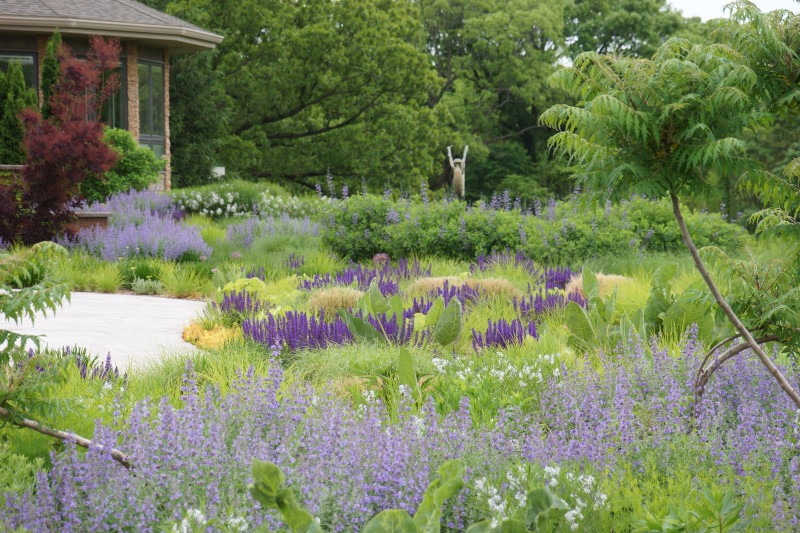
The New Perennial Movement
If you’re looking for new ideas in perennials, check out the New Perennial Movement. I’m not referring to coverage by industry media of every new perennial intro, I’m talking about the design style. It’s an evolution of the Dutch Wave and the New American Garden, but I’m not terribly concerned with its history. I am concerned, fascinated really, by the look, its benefits — which are spot on trend — and what it could mean for our industry.
If you’re not already familiar, it’s the planting style made most visible in this country by the Lurie Garden in Chicago and the High Line in New York City. It appeals to me deeply on a personal level but also a professional one.
The style uses huge numbers of perennials densely planted and the effect is nothing short of a dreamscape. It’s in every garden magazine and it’s the look behind a dozen popular books including the hot new release, “Planting in a Post-Wild World” by Thomas Rainer and Claudia West.
The New Perennial Movement features many North American natives in layered plantings on tight spacing. If there’s room for a weed, there’s room for another plant. It draws inspiration from natural plant communities, benefits pollinators, creates habitat, stresses right plant right place and plays well with the new trend in green infrastructure. But it hasn’t made the jump to the finished plant industry yet and I think there are a few reasons for this.
First and foremost, I don’t think our customers are asking for it … yet. It hasn’t made the jump in a meaningful way from public gardens and municipal projects to residential landscapes. Adam Woodruff’s Jones Road project (pictured) beautifully illustrates the potential in a residential setting. Due to the volume of plants required for all but the smallest plantings, larger landscape plugs and quarts are the preferred size for planting. They establish quickly and help keep costs down which are both great, but landscape plugs generally aren’t available to homeowners.
Now, I expect very, very few homeowners to rip out their turf and plant perennials on 12-inch centers over their entire property. But it does seem absolutely possible that gardeners, after visiting or even seeing pictures of one of the high profile examples like the Lurie Garden, might want to put three or four of those perennials together in a gorgeous little vignette or 30 to 40 in a larger planting still comfortably scaled to home gardens. Not making those plants available to homeowners means they can’t plant them even if they want to. When was the last time you stocked a sanguisorba or a big vernonia?
Another hurdle is the education of our customers and their customers and that’s tough. Many of the perennials used are showy later in the year, which means we either have to sell them green early or ship them big late. After many years of what amounts to a “no bloom, no room” mantra, we’ve gradually taught the general gardening public to only buy what’s flowering and to do it in spring.
The spectacularly photogenic New Perennial Movement may help us reverse that trend by sharing images highlighting the breathtaking beauty of late season perennials. I’m not overstating it — it’s that good looking. And we’ll need the help as several particularly awesome perennials look … underwhelming … in a pot when young. I’m looking at you, Silphium laciniatum.
The style appears rich with opportunity. It offers more plant varieties and in greater volume — win/win! And one of the things I love most: The New Perennial Movement encourages us to think about perennials for more than just flowers. Many perennials have beautiful blooms, yes, but they may also have attractive foliage, fall color and/or lasting form. Highlighting flowers is fine, but when we do it at the expense of their many other outstanding aesthetic qualities, we sell the whole product group short.
Look into the New Perennial Movement, get excited about perennials again and let’s figure out together how we can take advantage of this opportunity. For inspiring reading material in addition to the book mentioned earlier, check out “The Know Maintenance Perennial Garden” by Roy Diblik and almost anything written by Noel Kings


 Video Library
Video Library 




















